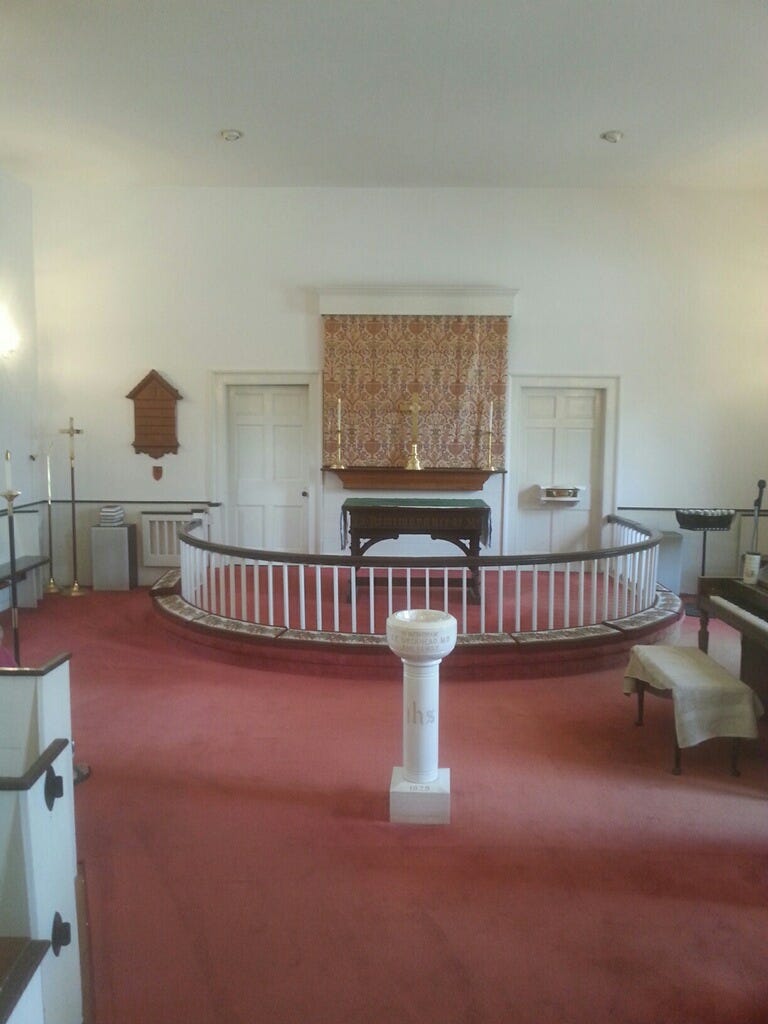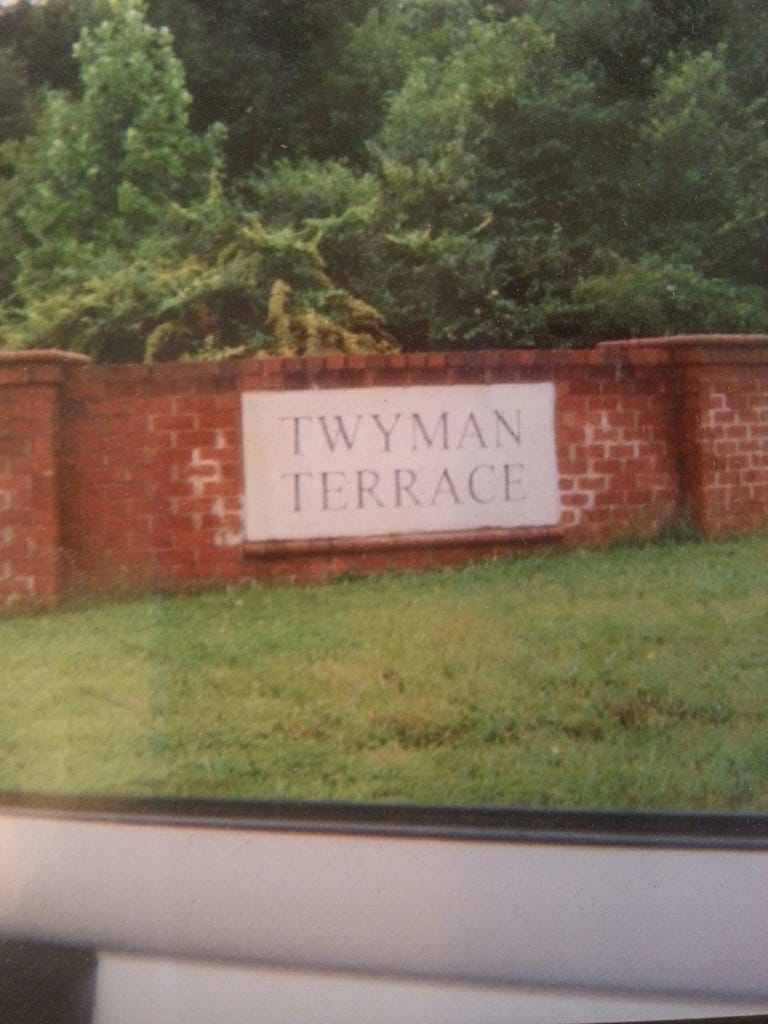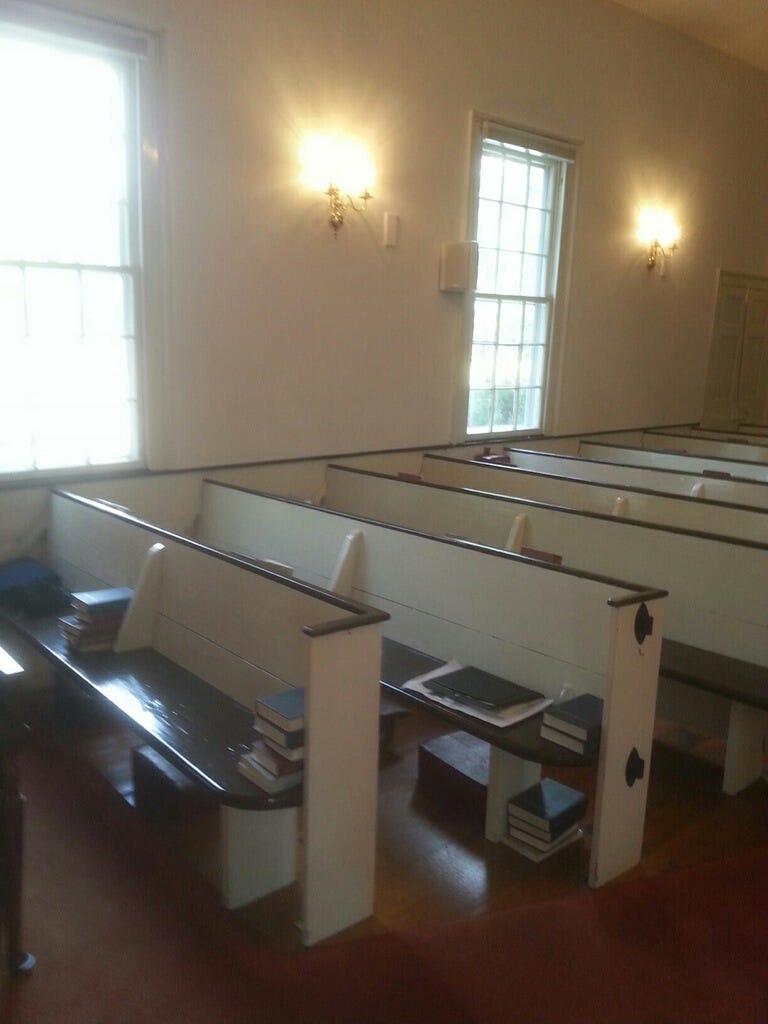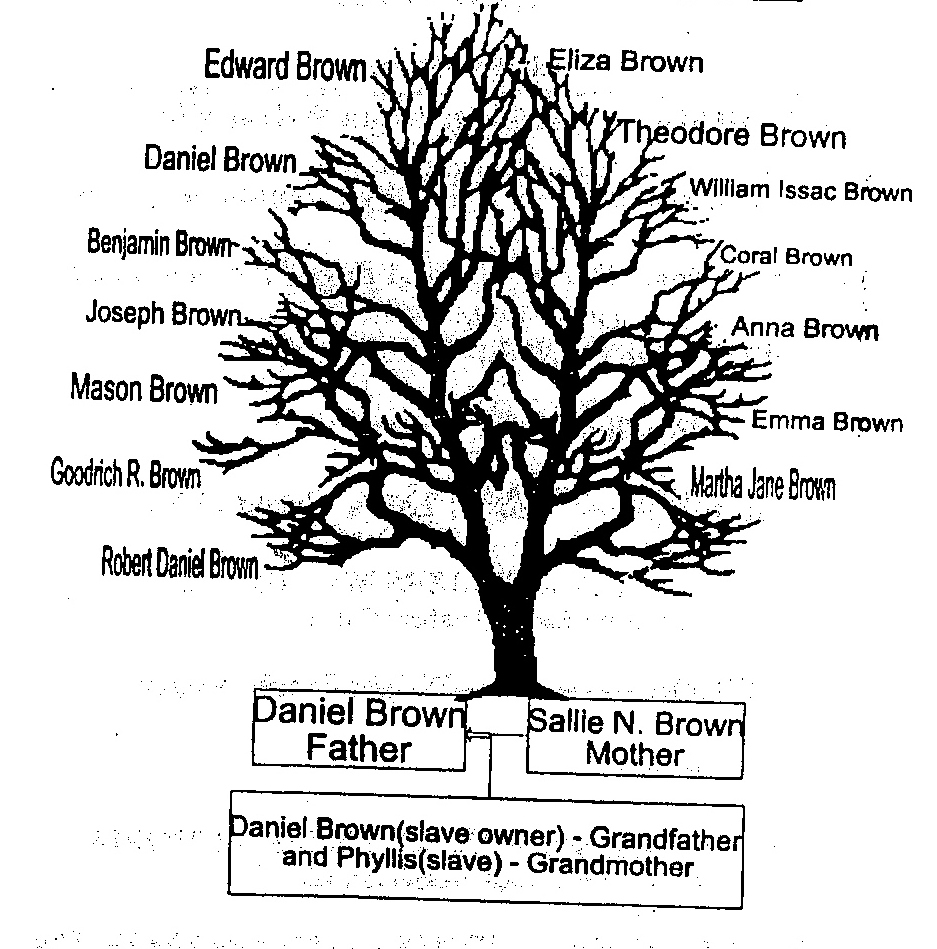[Introduction: One of my favorite readers has asked me to provide my initial email which prompted such a rich, organic and unified response from cousin Elizabeth Twyman Anderson. I thank the reader for the request. My vision is of a world where we live free of contrived divisions. Since my initial email was long and lengthy, I will publish my e-mail to Elizabeth as a serial release over the course of five days. I love these conversations where we focus on our inner life, not outer skin color.
If you share my love for these insights beyond dogma and slogan words, like and subscribe. I know that sounds trite and cliche-like. But the ability to see beyond an unexamined life is solely needed in the weeks and months ahead. Share my thoughts and ideas with others who weary of conformity. Let’s hammer out a better core philosophy of human dignity, creative expression and the individual. Artificial intelligence will not take us to a better place.
Let’s do it together.]
Submitted to Elizabeth on Saturday, February 17, 2018 at 4:04 p.m.
Traveling a Country Road: The Hunt for Distant Family
“If you look for yourself long enough, hard enough, and with grace,
You find yourself in others and you will never be alone.”
--- Unknown Writer
There is a country road that calms my spirit. I was on my way towards Earlysville in Albemarle County, Virginia. And while I felt anxiety and anticipation, the oak trees enveloped me as if welcoming an old friend. The deeper I drove into the heart of Albemarle, the more secure I felt.
As the country road curved left and right, I imagined how much had changed in these parts since the colonial era. Once upon a time, Englishmen traveled these back roads on horseback. Black slaves labored their lives away as chattel on farms.
I saw the sign up ahead. It read BUCK MOUNTAIN EPISCOPAL CHURCH + All Welcome.
My 5xgreatgrandfather, George Twyman III, served as the first Moderator (and Recording Secretary) of Buck Mountain Episcopal Church from 1773 to 1811. George III must have been a force of nature in those days as his position required much trust and neighborhood regard. I felt ancestral pride, a dash of pietas.
I stepped out of my car and returned home to my ancestral colonial church, Buck Mountain.
_____
I made eye contact with Chaplain Connie Clark (“Please call me Connie”) and saw acceptance. I exhaled as Connie welcomed me with the warmest embrace imaginable.
As we settled into Connie’s working study, I quipped I didn’t see a portrait of George Twyman III on the wall. Connie rejoined the church was quite small and had been humble about ancestral portraits. I assured Connie I understood before launching into my journey of self-discovery. For fifty-three years of my life, I had known only of a great grandfather in my Twyman line, Scott Twyman, from Orange County, Virginia and born a slave in 1848 when records of slave births and deaths were nearly non-existent, a circumstance akin to being orphaned before 1848.
And like orphans throughout time, I felt the pull of something more in my past.
As a student at the University of Virginia, I stumbled across a street sign for Twyman Road in Charlottesville. I did a double-take when I first saw the sign. I had grown up on Twyman Road in Chesterfield County, Virginia. Everyone who lived on my Twyman Road was a Twyman and we were all black.
This new Twyman Road in Charlottesville intrigued me. No blacks lived on this Twyman Road. After passing Twyman Road a couple of times, my curiosity got the better of me. Could these Twymans be related to me?
Over the years, the mystery of Twyman Road in Charlottesville gave rise to idle day dreams: Were these white Twymans related to me? If so, how did it happen? Would I ever know them? Would I ever meet them? Twyman is an uncommon name but that was no guarantee of kinship as my slave ancestors might have chosen a random name to mark their freedom and independence from slavery. I had a puzzle and one or two pieces of the puzzle and incompleteness at my center.
I joined Ancestry.com in the 2000s and, to my pleasant surprise, discovered a descendant of my great grandfather Scott Twyman through Ollie Twyman, a brother of my grandfather, James Twyman. We were second cousins. In a telling remark, my second cousin confided that she judged me white over the phone, concluded that we were not related, and said as much to her husband. I thought to myself that my second cousin needed to get out more and see a broader range of black people but I didn’t say anything to break the otherwise warm feeling of reunion.
Neither my second cousin nor I could identify the parents or grandparents of Scott Twyman and, disappointed again, I felt I would never know the answer of something more in my past.
I explained some of this longing to Connie but the words came pouring out of me with too much history to share.
Connie asked me when did the family separate into black and white? I said George Twyman III had owned slaves. His son, Samuel Twyman, fathered a slave daughter named Charlotte Twyman based on DNA test results at Ancestry.com and Gedmatch.com. In this moment, I began to think of Twymans as one genetic family driven apart by slavery.
Connie then showed me the pulpit of the Church. I saw the pew that my ancestor, George III, probably sat on at the front of the church. And Connie showed me the gallery in the rear of the church where slaves, like Charlotte, sat and the slave entrance towards the rear facing left. This moment captures the complexity of slavery for many African-Americans as we are descendants of slaves and slaveholders but it is more fashionable to erase the slaveholder from our past, to shut our eyes and pretend the slaveholder disappears.
Probable Front Row Pew of 5x Great Grandfather George Twyman III and Family
Probable Slave Gallery Where 3x Great Grandmother Charlotte Twyman Sat
_____
The Hunt for Distant Family
My perspective as a Twyman changed with the gentleness of a summer breeze. One Sunday morning on July 31, 2016, I received an e-mail from a stranger in Richmond, Virginia named Sam:
Greetings! You are my Gedmatch on my X-Chromosome, so we connect somewhere on my mother’s family. Not sure how far back but would be interested to see if we can find it. I am from Virginia, currently living in Richmond…My youngest daughter is a May graduate of UVA, small world.
Since we connected on my mom’s side, where is your mother’s family from in Virginia? My mother’s family on her maternal side would be Albemarle County, Campbell County and Cumberland County. I look forward to hearing from you.
Think of Gedmatch.com as a portal to the past. Every child born of a man and woman carries a genetic trace of father and mother. This has been true since the dawn of time. This is why I can know with pinpoint accuracy my Neanderthal ancestry. (For the curious, I have less Neanderthal variants in my genome than 99% of 23 and Me customers.) Gedmatch will take one’s raw dna from sites like Acnestry.com and 23 and Me and work wonders, finding matches to the first known Native American family, tribal peoples in West Africa, and cousins from all races from everywhere on the planet.
So, I initially treated Sam’s overture as a routine greeting from a distant cousin out of thousands. Time proved me wrong! Sam and I were related in a unique way. Out of 2,000 matches on Gedmatch, Sam fell in a rare category of cousins, perhaps 22 out of my closest 2,000 cousins, because, as males, Sam and I could only inherit an X Chromosome from a mother thus eliminating our fathers altogether as our genetic connection.
What made Sam really special to me? His passion for the Hunt for Distant Family, an insatiable drive and love for family history as he trolled plantations for fun, gathering intelligence while his daughter tagged along.
Imagine having an unpaid research assistant 2,621 miles away on the ground. Sam had a researcher’s instinct as he thumbed through records at the Virginia State Library. Military records, marriage records, census records—all were combed by Sam.
A funny thing happened in our search for our most recent common ancestor. The more Sam learned about my family tree, the more my paternal grandmother’s grandfather, Daniel Brown, intrigued Sam. Born of a white slave master and a light-skinned slave, Daniel received affection, attention and a promise from his father of the family plantation in Charlotte County, Virginia and a large sum of money if Daniel would promise never to run away. Knowing he could not enforce his white father’s promise upon his death as the townsfolk would not permit it, Daniel went into the Big House, removed the large sum of money, and moved with his wife and family to Richmond where he overcome numerous obstacles and acquired 550 acres of land.
This epic story gripped Sam. “Daniel was a beast,” Sam would say. Few blacks were able to acquire property after the Civil War, let alone hundreds of acres of land that remained in the family for generations. As far as I know, Sam is up tonight in Richmond searching for Daniel Brown….
The breakthrough came a few days before my birthday. Over fifty years of searching by me… and Sam found my connection to the white Twymans in Charlottesville as an afterthought:
Let’s talk about Gedmatch for a moment. I put your kit in the list family tree and a number of family trees popped up. One that intrigued me was the one that had the Maundry/Twymans in it. The Twymans lived in Albemarle and then moved to Kentucky. I rarely have family trees with names that are common with names that I know. You are blessed.
Look for the one that says “Shelby” Twyman.
My fourteen-year-old daughter did not share my joy and said as much: “He’s a stranger! You met him on the Internet! OMG!” Every sentence lacerated my spirit with an exclamation point. “He’s my cousin and his daughter went to UVA….” “Dad, how could you! Have you met him?” “No, but…” “Family are people that you know.”
Over fifty years of curiosity trumped teenager angst. I should have invested hours of time in crafting the perfect first contact, a first impression. I didn’t know Shelby. The odds were fifty/fifty against me as many outreach messages to distant cousins are never answered. I crafted the following message fueled by faith, hope and positive thinking:
We are related at the degree of 4.6 most recent ancestor, according to GEDCOM + DNA matches on Gedmatch.
I was born in Richmond, Virginia. My great-grandfather, Scott Twyman, was born in Barboursville, Orange County, Virginia in 1848.
You have several Twymans in your GEDCOM family tree---
(1) Samuel Twyman, b. May 17, 1759, Albemarle County, Virginia; d. before October 27, 1823, Orange County, Virginia
(2) John Twyman, b. April 20, 1785; d. October 13, 1854; Barren Co., Kentucky
(3) Frances Rogers Twyman, b. September 28, 1812; d. December 28, 1885, Barren County, Kentucky
Twyman is an uncommon name. Any suggestions you can offer about identifying our most recent common ancestor would be most appreciated.
Thanks.
I hit the send button and waited for an unknown distant cousin to say something, anything.
I waited for minutes. Minutes turned into hours.
To settle my anxieties, I decided to learn more about Shelby’s ancestry. The Heritage Admixture calculators revealed Shelby to be around 97% European. I took note of her 0.52% Sub-Saharan African ancestry.
On my birthday, I received a response from Shelby:
Thank you for getting in touch with me about our shared DNA. You are the first person who has contacted me where I recognized one of the surnames they listed as one of my own. Looking over your tree on Ancestry, I noticed there aren’t any documents or records attached to your tree. So poking around a little, I found quite a number of documents for Scott and (his father) Robert Twyman. I have saved them to my shoebox on Ancestry, so I have them handy. I also noticed the records indicate they are African-American……Alright I really want to dig and find out how we are related now!
I have been doing genealogy for 28 years and have never had a situation present itself where I needed to prove an African-American cousin before…. Talk about spreading your genealogical skills. This is going to be fun.
Your cousin in Kentucky
Shelby
And it was fun from first contact. I shared my story about Twyman Road with Shelby. She marveled that I had grown up around so much family. We both understood slavery as an abomination and ugly part of our history. She acknowledged that some of her ancestors did horrible things but she wouldn’t disown them. She viewed her ancestors as akin to her children. Shelby became poetic, expressing her feeling by shedding light on all of the facts, “that we take away the power that the darkness of slavery had on the unfortunate victims.” It was what it was. We couldn’t change the past. We could change today by working together to create a better future.
I shared a toddler-aged picture of my daughter with Shelby saying, “This is my daughter, your fourth cousin once removed.” How would Shelby react to her first sight of her African-American cousin? Any anxiety I felt was misplaced. Shelby replied, “Well, let me begin with how cute my cousin is!!! What a sweet little bug she is. I bet she is a handful.” I shared Shelby’s reaction with my kids and this led to much ribbing from my older son about his sister, the little bug!
Although I dabbled as a weekend hobbyist with a demanding day job, Shelby piloted our research as she had the expertise, the instinct and the time for research. We knew my great grandfather Scott Twyman’s father was Robert Twyman, Robert Twyman’s brother was a mulatto, Smith Twyman, and, we subsequently learned, Robert Twyman’s mother was Charlotte Twyman. All of these African-American ancestors had been born slaves. Smith wasn’t my direct lineal ancestor but Shelby wisely believed much could be learned from siblings. Shelby suspected Smith’s brother, Robert, might also be a mulatto and that this lineage would lead us towards our white common ancestor. I suspected the same thing.
[To be continued…]










Fascinating and most exciting too!!!
Bless you, merry gentleman!